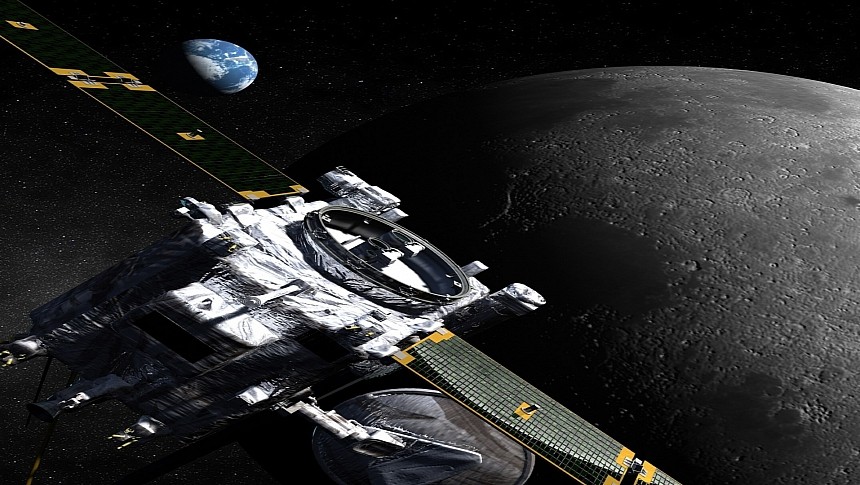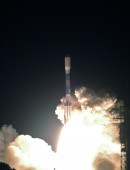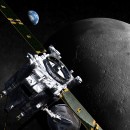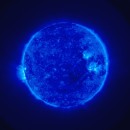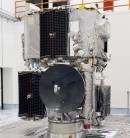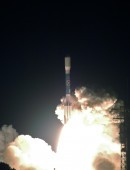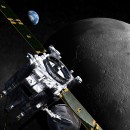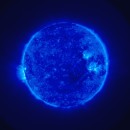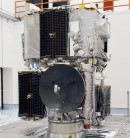When NASA launches a space probe to heavenly bodies beyond the Earth, it's a one-way ticket with no chance of a return trip. But not all NASA probes operate in this manner. Sometimes, deliberate planning and a liberal sprinkling of orbital mechanics allow space probes to return to Earth's sphere of influence, if ever so briefly. This would be the case with NASA's STEREO-A spacecraft. One of two practically identical solar observation probes in a rudimentary orbit around the Sun that have just been flung around to buzz the proverbial tower that is planet Earth.
Launched aboard the same Delta II rocket out of SLC-17B at the Cape Canaveral Air Force Station (now Space Force Station), the twin Solar Terrestrial Relations Observatory (STEREO) probes were only expected to survey the Sun stereoscopically for around 24 months. By achieving heliocentric orbits with very nearly 180 degrees of separation between them, the two probes could, for the first time, render images of our Sun not as a flat disk in the sky but the colossal, rounded, oblate-spheroid shape it truly is in the flesh.
NASA last made formal contact with the STEREO-B spacecraft back in September 2016 before its mission was declared over following a complete loss of signal to the probe by mission control. Meanwhile, STEREO-A continued to trundle along. Taking detailed panorama images and compound image GIFs that, even 17 years after its launch, still dazzles NASA personnel and civilians alike. By observing the Sun's activity from multiple different aspects, NASA was able to develop a keen sense of when the Sun is ramping up coronal ejection activity compared to when it's winding down. A phenomenon known as solar minimum and solar maximum.
Based in large part on the observations made by the twin STEREO probes, NASA scientists currently estimate the next peak of the solar maximum cycle is due to hit sometime around 2025. As STEREO-A makes its closest approach between Earth and Venus, all eyes on the probe will be focused on the data the probe can collect as the Sun gradually ramps up its ejection activity. When compared to the data it's collected while the Sun is in a comparatively more dormant state, NASA hopes to find a discernable trend that scientists can use to calculate solar activity as close to an absolute as mathematically possible. By applying this data in a practical application, it might even be possible to anticipate and prepare for upcoming solar storm activities well before they occur.
For now, STEREO-A is expected to remain roughly inside Earth's sphere of influence without being gravitationally captured by the planet for the remainder of August 2023 and perhaps into the following month as well. But before long, STEREO-A will get right back to the task at hand as if its flyby of Mother Earth never even happened.
NASA last made formal contact with the STEREO-B spacecraft back in September 2016 before its mission was declared over following a complete loss of signal to the probe by mission control. Meanwhile, STEREO-A continued to trundle along. Taking detailed panorama images and compound image GIFs that, even 17 years after its launch, still dazzles NASA personnel and civilians alike. By observing the Sun's activity from multiple different aspects, NASA was able to develop a keen sense of when the Sun is ramping up coronal ejection activity compared to when it's winding down. A phenomenon known as solar minimum and solar maximum.
Based in large part on the observations made by the twin STEREO probes, NASA scientists currently estimate the next peak of the solar maximum cycle is due to hit sometime around 2025. As STEREO-A makes its closest approach between Earth and Venus, all eyes on the probe will be focused on the data the probe can collect as the Sun gradually ramps up its ejection activity. When compared to the data it's collected while the Sun is in a comparatively more dormant state, NASA hopes to find a discernable trend that scientists can use to calculate solar activity as close to an absolute as mathematically possible. By applying this data in a practical application, it might even be possible to anticipate and prepare for upcoming solar storm activities well before they occur.
For now, STEREO-A is expected to remain roughly inside Earth's sphere of influence without being gravitationally captured by the planet for the remainder of August 2023 and perhaps into the following month as well. But before long, STEREO-A will get right back to the task at hand as if its flyby of Mother Earth never even happened.
